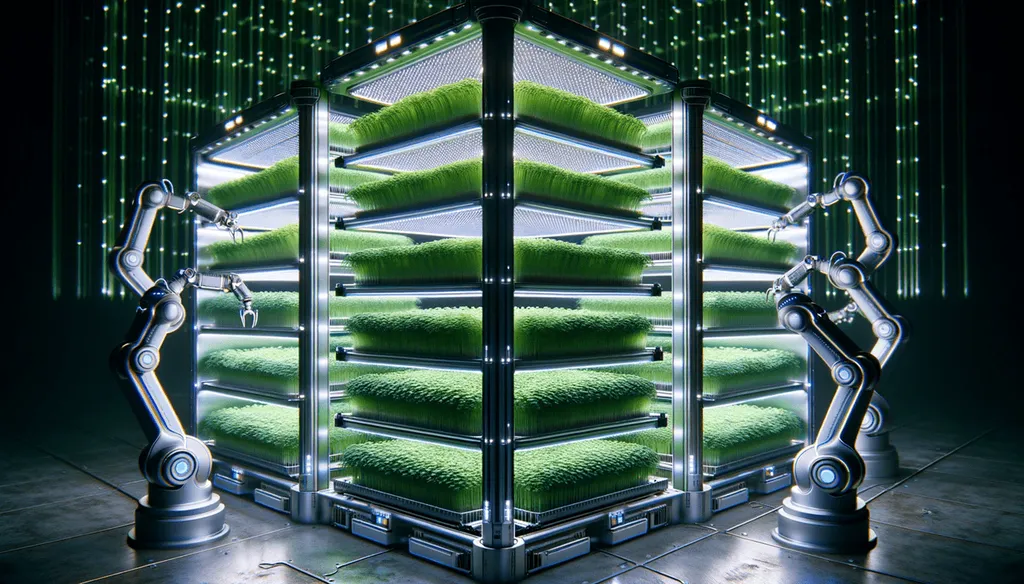In the heart of Tekirdag, Türkiye, a groundbreaking study led by Figen Taşcı Durgut from the University of Tekirdag Namik Kemal is revolutionizing the way we think about sustainable food production. Durgut, an expert in machinery and metal technology, has turned her attention to the burgeoning field of microgreen cultivation, with a focus on automated systems that promise to deliver both nutritional benefits and environmental sustainability.
The study, published in the journal *Frontiers in Sustainable Food Systems* (translated as *Frontiers in Sustainable Food Systems*), evaluated the performance of a fully automated microgreen production cabinet system. This innovative system, dubbed the “confetti cabinet,” was designed with a sustainable food processing perspective, aiming to optimize the growth of leek, amaranth, and purslane microsprouts.
Durgut and her team compared the nutritional and functional properties of microsprouts grown in the automated cabinet versus those cultivated in standard laboratory environments. The results were striking. Leek samples grown in the cabinet showed significantly higher vitamin C content than those grown in the laboratory (74.27 ppm vs. 62.68 ppm, p < 0.05). "This indicates that the automated system can enhance the nutritional value of microgreens, making them a more attractive option for health-conscious consumers," Durgut explained.The study also revealed that purslane samples had the highest antioxidant capacity, with an EC50 value of 174.64 μg/mL. This finding underscores the potential of purslane as a functional food ingredient, rich in antioxidants that can combat oxidative stress and inflammation.One of the most intriguing aspects of the research was the use of multivariate statistical analysis, including principal component analysis (PCA) and correlation analyses. These tools revealed significant differences in the distribution of certain micronutrients, such as sodium, magnesium, and boron, across different production environments. "This level of detail is crucial for understanding how different growing conditions can influence the nutritional profile of microgreens," Durgut noted.The implications of this research extend far beyond the laboratory. As the demand for sustainable and nutritious food continues to grow, automated cultivation systems like the confetti cabinet offer a promising solution. These systems not only enhance the nutritional quality of microgreens but also provide a sustainable and traceable production method. This could be particularly impactful in the energy sector, where the integration of sustainable food production with renewable energy sources could lead to more efficient and eco-friendly agricultural practices.Durgut's work highlights the potential for future applications in functional food production. "By optimizing growing conditions, we can produce microgreens with tailored nutritional profiles, catering to specific health needs and preferences," she said. This could open up new avenues for the food industry, from health food stores to high-end restaurants, all seeking to offer products that are both nutritious and sustainable.In conclusion, Durgut's research represents a significant step forward in the field of sustainable food production. By leveraging advanced technology and statistical analysis, she has demonstrated the potential of automated systems to enhance the nutritional quality of microgreens. As the world continues to grapple with the challenges of food security and sustainability, innovations like the confetti cabinet offer a beacon of hope for a healthier and more sustainable future.

